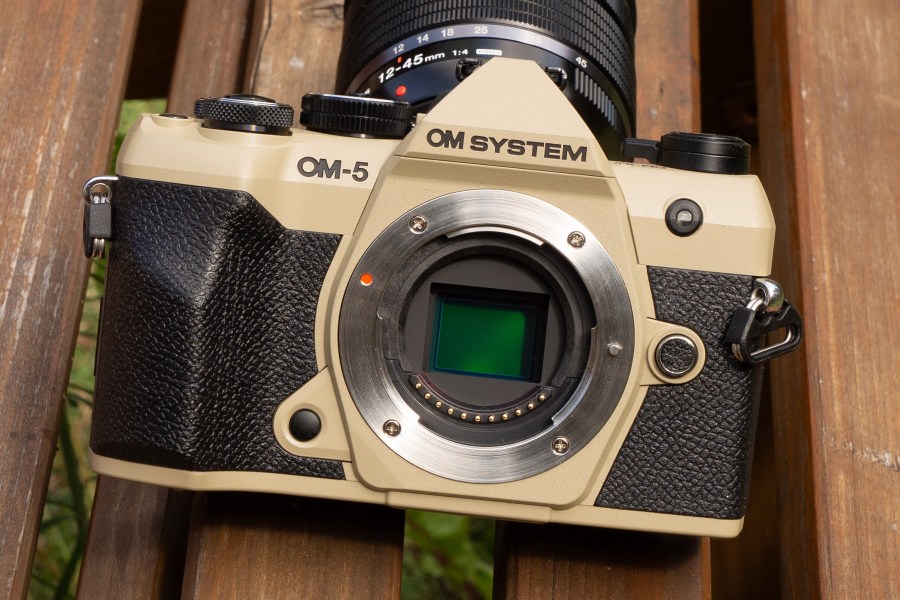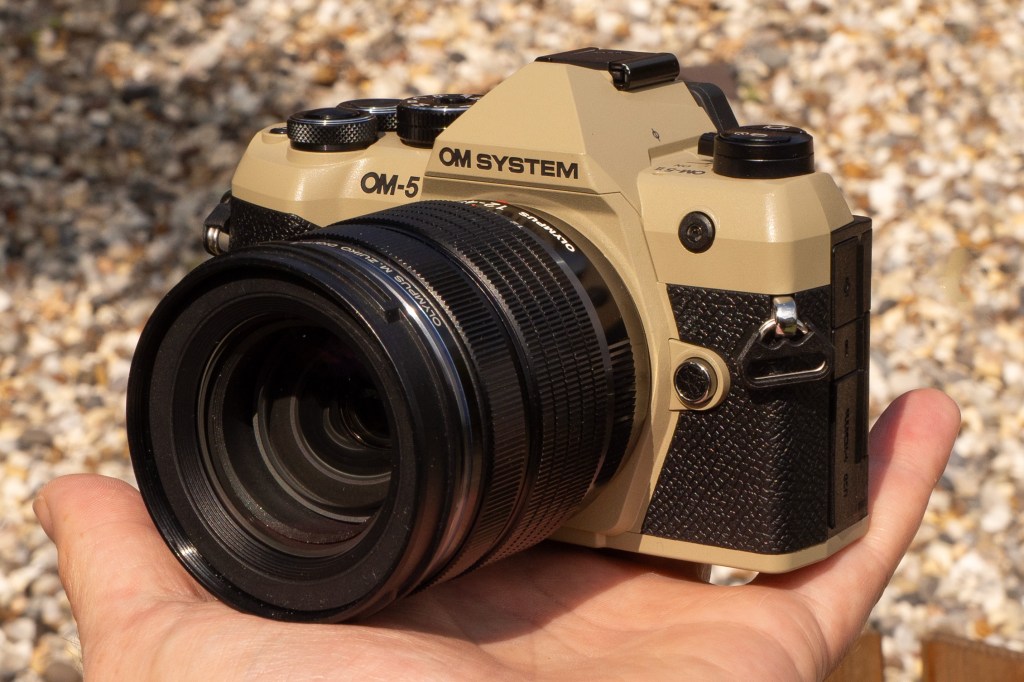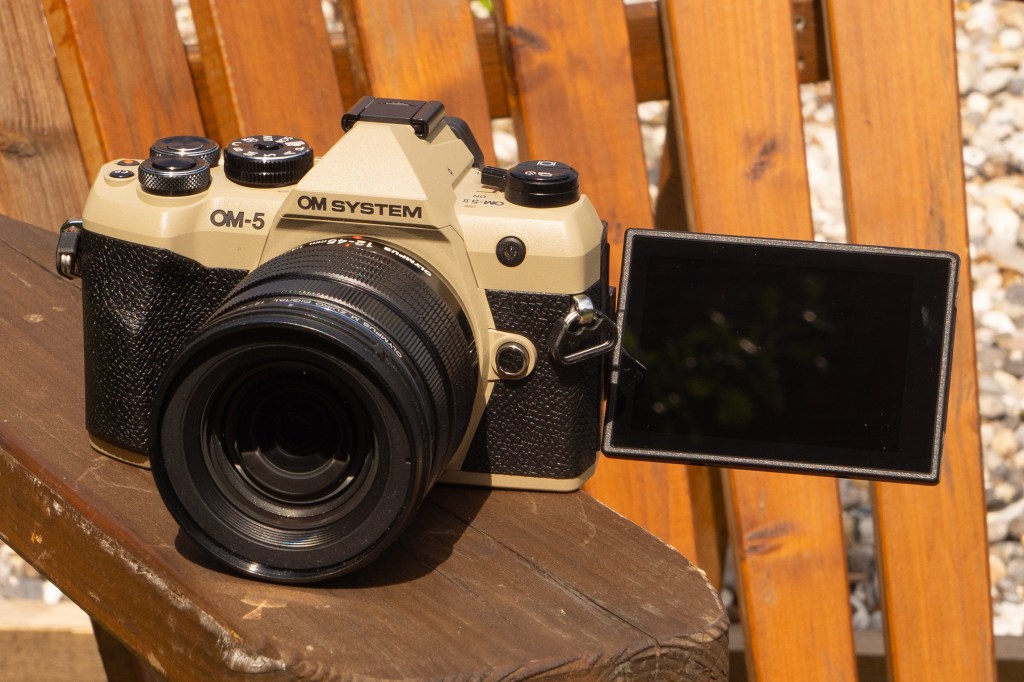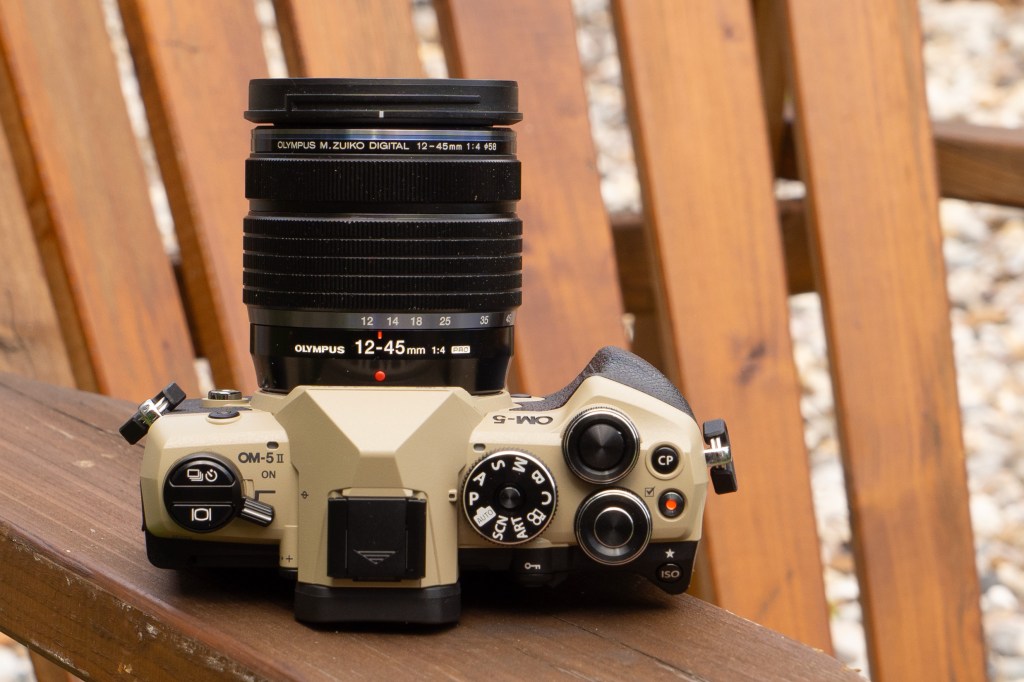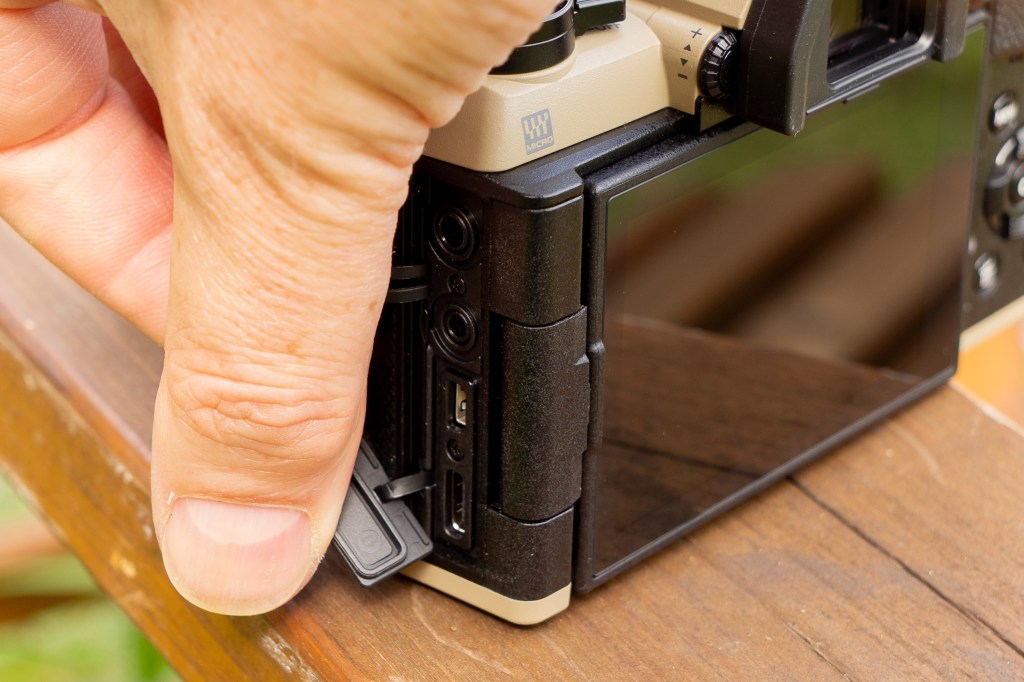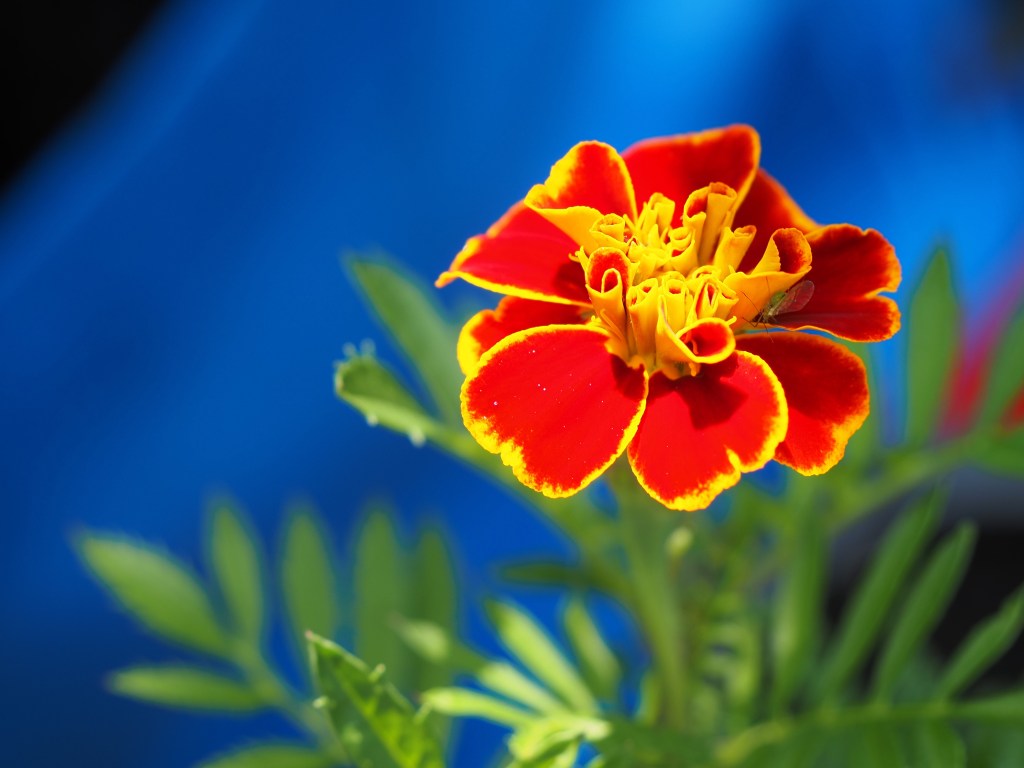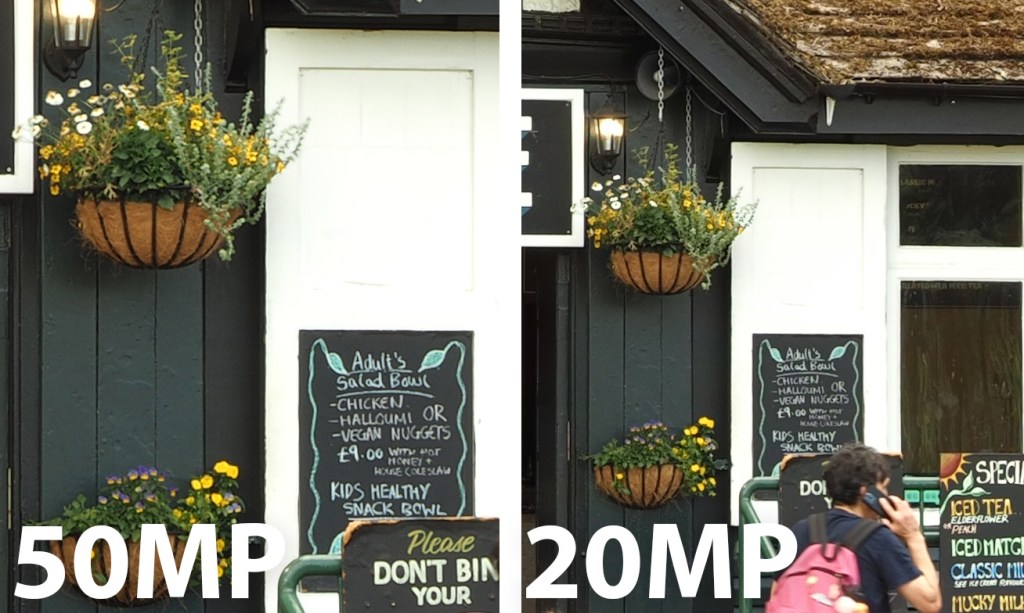Amateur Photographer verdict
The OM-5 Mark II adds sorely missed features. It’s a camera that gets out of your way and lets you shoot and more importantly enjoy photography. The best value weather-sealed camera ever made.- Beautiful Olympus/OM colours straight from camera
- Compact weather-sealed camera and system
- New menus, grip and USB Type-C
- Impressive stabilisation system
- Extensive lens range
- Not optimised for video (see below)
- Sensor, viewfinder, screen remain unchanged
- AF system lacks subject detection
OM System has announced the new OM-5 Mark II, and it comes with a number of features that we’ve been waiting for since the release of the original OM-5, one of the best OM System / Olympus cameras, especially for those who travel. Read on to find out the changes made with the new model.
At a glance:
- $1199 / £1099 / €1299 body only
- $1599 / £1499 / €1699 with 12-45mm F4 PRO lens
- 20.4MP Four Thirds sensor, with 5-axis IBIS
- ISO 200-6400 (standard); ISO 64-25600 (extended)
- 30fps shooting (electronic shutter), 10fps C-AF, 6fps mech.
- 4K 30/25/24p video, Full HD 120p
- 2.36m-dot electronic viewfinder (EVF)
- 3inch, 1.04m-dot vari-angle LCD touchscreen
- 3 colour options
OM System OM-5 Mark II Features
It’s been three years since the OM-5 was introduced, now OM are back with the OM-5 Mark II. The new model feels like a light refresh. What the camera offers continues to be a stylish, classic looking camera, with great colour reproduction, but with some subtle but important upgrades.
The OM-5 was (and remains) a highly competent camera, it quickly earned a place in our guide to the best Olympus / OM System cameras, but came with some fairly major weaknesses as well, which have now been addressed with the new model, namely Micro USB has been replaced with USB Type-C, and the menus have finally been updated.
These two things should make an already excellent camera, an almost perfect camera in the eyes of OM-5/E-M5 fans, but for those expecting more, such as a new sensor, those people are likely to be sorely disappointed. The sensor stays a 20MP Four Thirds sensor, with phase-detection AF.
The sensor (and camera) is highly capable when it comes to producing images with excellent colour, and respectable noise performance, but there will be those that feel the need for more resolution, especially as Panasonic offer a 25MP sensor in some of their Micro Four Thirds models. If you can accept 20MP images (or take advantage of the 50MP/80MP high-resolution modes), then this shouldn’t be an issue. There’s more to photography than megapixels, but you may be wondering: is 20MP still enough? Only you can decide what’s right for you, but have a look at the images in this review and see for yourself.
The camera sits in the upper entry-level section of the market, and is the entry-level model in the weather-sealed range of OM cameras, with the OM-5 II, moving up to the retro styled OM-3, and high-end OM-1 / OM-1 Mark II. It remains amongst the smallest mirrorless cameras you can buy, making it an ideal companion for the range of smaller, affordable Micro Four Thirds lenses.
However, the body has been refreshed as well with a larger grip at the front, and an updated top button now marked as “CP” for computational photography – this gives quick access to Hi-res mode, Live ND (1-4EV, up to ND16), Focus stacking, HDR and multi-exposure. The camera continues to offer the impressive Live Time and Live Bulb modes, although these are found in the manual shutter settings, rather than in the CP section.
Live Time and Live Bulb allow you to watch long exposures build up in real time on the screen, while Live Composite overlays multiple long-exposure shots, adding only brighter areas onto the original frame. This allows light trails to be built up without overexposing the entire image, making it extremely useful for a wide range of night and light painting photography.
The OM-5 II is priced at $1,199 / £1,099 body only. It sits above the beginner-friendly Olympus OM-D E-M10 range, which is yet to receive an OM System refresh.
Its body is IP53 weather-sealed, making it extra-safe in rainy and snowy conditions, when paired with a weather-sealed lens. It’s lightweight and agile, offering fast shooting speeds (up to 30fps continuous shooting) and some of the best stabilisation on the market, with up to 7.5 stops of image stabilisation, thanks to the 5-axis sync IS system.
New stand-out features
- New Menus – the OM-5 II now gets the same updated menus that were introduced with the OM-1.
- CP button – a top button now gives quick access to computational photography features, like hand-held high-res shooting.
- Larger grip – the front grip has been enlarged to help with grip when using larger lenses.
- USB Type-C – the camera now supports USB Type-C and like the previous model, can be used as a webcam.
Like the previous model, the OM-5, the camera offers 4K video, along with support for vertical video recording, OM-Cinema 1 and 2 (both new), and OM-Log400. The later helps with grading footage later, although all video modes only offer 8-bit and not 10-bit. There’s also a red frame, front red LED, as well as webcam support, so you can plug the camera directly into your computer and use it as a high-quality webcam, albeit at 720p 30fps.
Other updates include a “Night Vision” mode designed to assist shooting in low light and at night, as found on other OM System cameras. There’s also the addition of hand-held assist, which is set up to show you how steady you’re holding the camera. There’s also an offer to extend the warranty to 5-years when you register the camera.
The AF system
The auto-focus system remains mostly unchanged. This is unfortunate, as the OM-5 Mark II does not feature subject detection AF modes, and instead only offers Face and Eye detection. This has been updated to give better performance, but it’s disappointing to see that the clever animal/bird/vehicle subject detection AF system from other OM System cameras isn’t found on this model. Especially as this can be found on similar priced models from other brands. This doesn’t mean the auto-focus system is bad, on the contrary, it’s fully capable of providing accurate and reliable focus, with 121 phase-detection AF points, it just means that there is better auto-focus available on other systems, like the OM System OM-1 / Mark II.
Design and Handling
The OM-5 II changes little in terms of design and handling, with a fundamentally same design as the previous model, however, look a little harder and you might spot the deeper grip, which also adds an additional textured pattern to increase grip even further. Of course, there is now a “Sand Beige” colour option available, in addition to all-black, and silver and black colour options. Whilst the new beige colour isn’t my personal favourite, I can’t really complain about customers having more choice.
The top exposure compensation button has been replaced with a CP (Computational Photography) button, and this is hardly missed, as the front dial lets you adjust exposure compensation without the need to press a button. Press the CP button while using the camera, and turn the back dial and you can scroll between these modes. You can customise most buttons on the camera to set it up how you want it.
The OM-5 was released with an optional grip; however, the OM-5 Mark II doesn’t come with one, and OM System say that they expect third party manufacturers to fill this gap. Like the OM-5, the camera has several external controls giving quick access to change settings, and it’s rare that you’ll need to enter the menus when shooting with the camera.
However, the new menus are a very welcome addition being clearly colour coded into different sections, and the Super Control Panel also gives quick access to settings on the back screen. There’s a MyMenu section for registering your favourite settings, or the ones you want to change more frequently, and the camera menus can be scrolled through very quickly using the command dials, or the 4-way d-pad.
How the camera feels in your hand in is something that’s difficult to describe in words alone, but it’s worth expressing how the new grip gives additional reassurance to an already impressive camera. It’s a small camera, but it doesn’t feel too small, in fact the grip feels large, and the camera feels surprisingly competent for the size, almost like it’s some kind of magic Tardis, packing in more than should be possible in such a small camera body.
On paper the electronic viewfinder (EVF) and screen sound relatively average, as the resolution of both remains the same as the E-M5 Mark III (2.36m dots and 1.04m dots respectively). In use this doesn’t matter as much as you might think, as both provide a realistic view of the scene. In bright sunlight the screen can be difficult to see clearly, and then switching to the EVF gives a much clearer view, and with dioptre adjustment can be tweaked if needed.
External controls
Like the E-M5 Mark III, and OM-5, the Mark II offers the same dual dial control setup, with front and rear control dials. This makes it quick and easy to change settings, and if you’ve used other cameras with two control dials then this should immediately feel natural to you. On the back you’ll find the 4-way d-pad, which can be used to quickly move the focus point (or area), but unfortunately this hasn’t been updated to be an AF joystick.
Almost every single button can be customised on the OM-5 II – in fact there are only four buttons that can’t be customised, five if you include the shutter button. So much so, that it’s quicker to list the buttons that can’t be customised: these are menu, info, delete and playback. The 4-way d-pad can be customised as well, if you need even more control over the buttons. This means you can customise and setup the camera exactly how you want for photography if for some reason the default settings don’t suit you. Speaking of customisation, there’s one C (Custom) mode on the dial, however, within that you can setup four different custom modes.
Performance
If you’ve read our OM-5 review, then there shouldn’t be any surprises when it comes to image quality. The OM-5 Mark II, with the same sensor, gives very similar, if not identical performance, with lovely looking colours and crisp detailed images. I used the 12-45mm F4 lens, which gives sharp results, and offers impressive close focus performance when using the full zoom.

These photos were taken straight from the camera as JPEG images with no further editing or processing, and this is one of the key features of OM System cameras, the ability to get amazing JPEG images straight from camera, or SOOC (Straight out of camera).
The camera’s auto white balance (AWB) performance is excellent, and rarely needs altering, with an option to “Keep warm colour” giving images a pleasing tone. For product shots (on a white background for example), you can switch this off, and combined with the range of macro lenses available, you get a camera that is highly capable when it comes to product shots.
A lot of modern cameras are focused on creative “film” looks, and this is something that Olympus/OM System cameras been offering for a very long time, except they call them “Art filters” and in there you’ll find a range of film modes, including Vintage, Bleach bypass, Grainy film, Pin hole, Cross process, Gentle sepia, and even Instant film.
You can also customise the standard colour modes with options for Vivid, Natural etc, giving further customisation with settings for contrast, sharpness, saturation, gradation (normal, high, low). One thing that could be good to see added in the future is a grain effect option that can be applied to any colour mode, however you can simply turn the noise filter off for some real noise.
LiveND computational photography
This can be used handheld with shutter speeds around 1/4s of a second (your mileage may vary), but for best results you can use a tripod for long exposure shots. This is great for smoothing water without the need of a filter on the lens. You can see the effect before the photo is taken so that you can dial in the correct shutter and aperture settings.

This can work really well for smoothing water, but can look a little odd with some movement (for example the bubbles on the water), and if this is something you spend a lot of time doing, then you may prefer to continue using real ND filters, due to the way the images are merged together.
High-res multi-shot

The OM-5 Mark II offers a high-res multi-shot mode that moves the sensor at a subpixel level (0.5 pixels) and takes multiple shots to give a higher resolution image, these are auto-created in camera at 50MP (as JPEGs) when using the camera on a tripod. You can also use this handheld and get 50MP JPEGs, and this uses the movement of the camera to capture additional detail.
When using the camera on a tripod, the camera creates 50MP JPEGs in-camera, and you can create 80MP images from the raw files in OM Workspace (on your computer). In contrast, the OM-3, and E-M1 III and OM-1 series can create 80MP images in-camera. Luckily, this is a quick process of simply opening the RAW file in the software and exporting it.
Video performance
The OM-5 Mark II, on paper, looks to give some reasonable video features, including unlimited 4K 30/25/24p, as well as CINE 4K recording. The in-body image stabilisation system (IBIS) is also rather impressive, and the forward-facing screen, red tally LED, and red frame, should make this the perfect vlogging camera, thanks to the small size. There’s also OM-Cinema 1 and OM-Cinema 2 profiles available, with the first one designed to give a great look, without any further grading needed.
However, there are some bigger issues that will put off those who are looking for the ultimate in video quality, namely the camera records 8-bit video (not 10-bit), and the built-in microphones have a nasty habit of recording hiss on the audio track, that I have been unable to eliminate without further video editing. This could be resolved by using an external recorder, but it’s a shame when Olympus/OM System have such a strong heritage in audio recording devices.
Value for money
One thing worth highlighting in particular is the intro price of this model, priced at $1199 / £1099 body only, it’s a £100 price drop compared to the RRP of the OM-5, in the UK at least. This makes the cheapest weather-sealed camera even cheaper, and this is in stark contrast to most other brands that are releasing new models with ever increasing prices. The Fujifilm X-S20, for example, is priced at $1299 / £1249 body only, and doesn’t feature weather-sealing. Another new model is the Nikon Z50 II, with 20MP APS-C sensor, but no weather sealing, and without the wide range of lenses.
Verdict
The OM System OM-5 Mark II is perhaps what the OM-5 should have been three years ago. USB Type-C has been around for a very long time now, and the new menus were introduced by OM in the OM-1, before the OM-5 was released. The OM-5 and OM-5 II are both great little cameras, and part of a great eco-system, but without any major advances in image quality or resolution, the OM-5 Mark II is not going to be a major upgrade for OM-5 users. Personally, I’m a big fan of OM cameras, and love the colours and image quality output from them, as I don’t need higher resolution images, but there will be many out there who see 20MP as a real deal breaker. If you’re a able to look past that, and want an easy-to-use weather-sealed camera that you can take with you on your travels and adventures, then the OM-5 Mark II will be an amazing companion.
The OM-5 Mark II is in a unique position of offering a small camera with weather-sealing, with an extensive range of small, high-quality lenses – the biggest range of lenses in any camera system. Alongside that it offers beautiful image quality with great JPEG colour, as well as lots of clever computational photography features that make a real difference when you’re out and about. See a beautiful waterfall, but forgot to pack a tripod and ND filter? Don’t worry, the OM-5 Mark II lets you get the smooth water shots with LiveND and the impressive IBIS system. Whilst this may be a minor update, a minor update to a very good camera means you still have a very good camera, and at this price point, it’s difficult to find something that offers so much, making this the best value weather-sealed camera ever made.

Specifications
| Sensor | 20MP Four Thirds Live MOS (CMOS), 17.4 x 13.0mm |
| Output size | 5184 x 3888 |
| Focal length mag. | 2.0x |
| Lens mount | Micro Four Thirds |
| Shutter speeds | 60s – 1/8000sec (mech) 1/32000 (elec) |
| Sensitivity: | 200-25600 (Low 64/100) |
| Exposure modes | P,A,S,M, Bulb, Auto, Art, Scene |
| Metering | Digital multi-pattern, center-weighted average, spot |
| Exposure comp. | +/- 5EV |
| Continuous shooting | 6fps (mech), 10fps C-AF elec, 30fps F-AF elec |
| Screen | 3.0inch vari-angle touch, 1.04M-dot |
| Viewfinder | 2.36M-dot OLED |
| AF points | 121 (phase/contrast) |
| Video | C4K 24fps / 4K 30/25/24fps (96kHz/24bit audio) |
| External mic | 3.5mm stereo |
| Memory card | UHS-II SD |
| Power | BLS-50 Li-ion battery |
| Battery life | 310 shots / 640 shots (quick sleep mode) |
| Dimensions | 125.3 x 85.2 x 52.0mm |
| Weight | 418g (with battery, memory card) |

